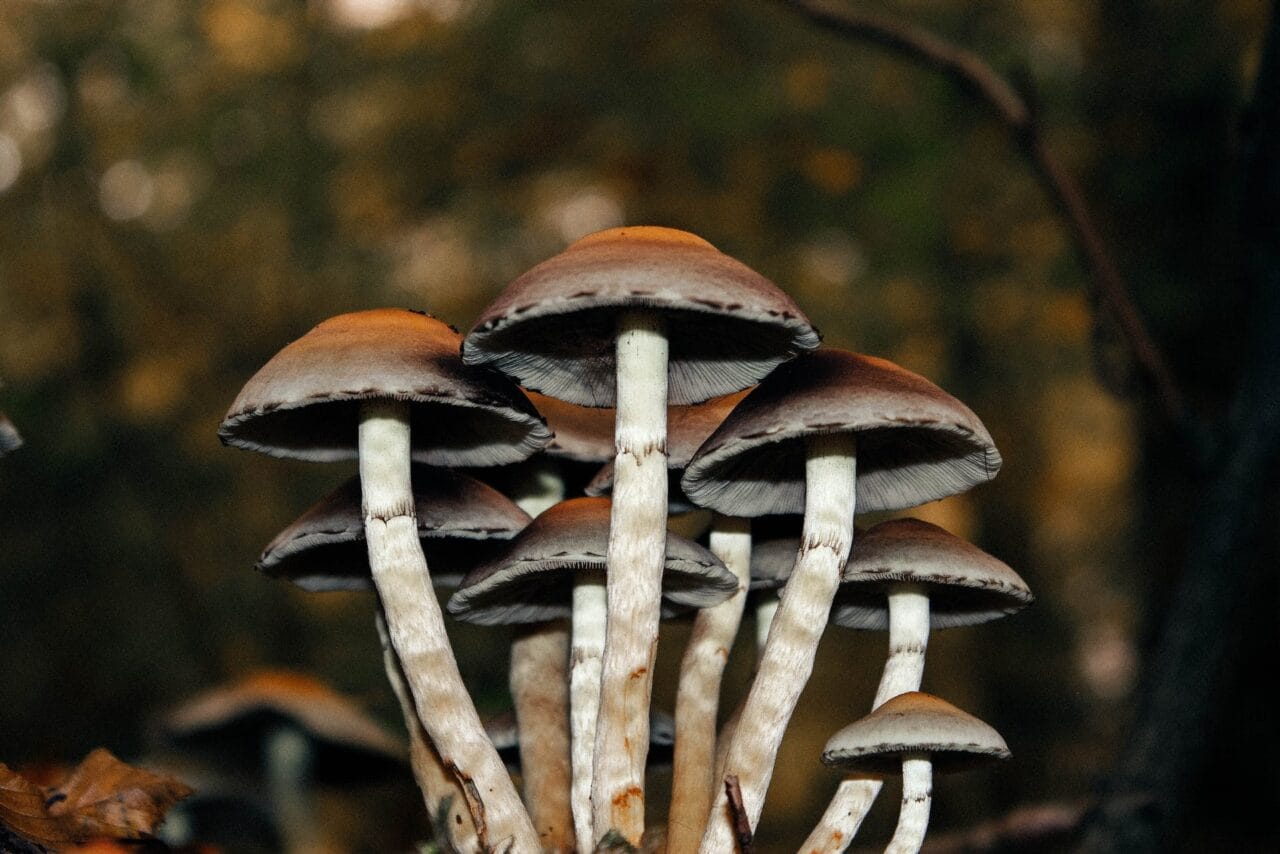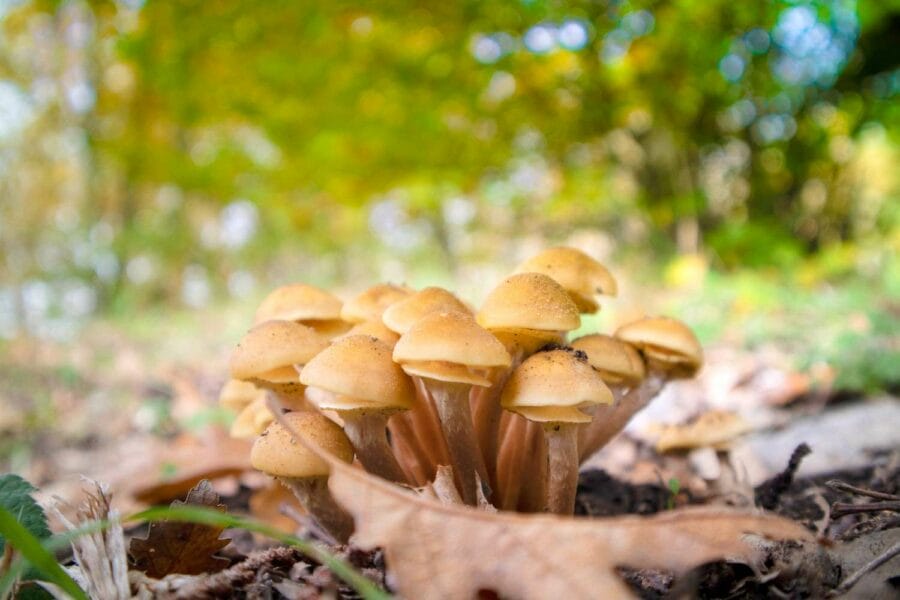Psilocybin, a psychoactive compound located in magic mushrooms, is frequently used for recreational purposes due to its ability to induce euphoria and hallucinations.
The compound has been studied for its potential benefits in managing chronic pain, beyond its mind-altering effects.
This article presents a case study that explores the potential of mushrooms microdosing in alleviating chronic pain.
Key Takeaways:
- Potential benefits of microdosing mushrooms include immediate and long-term pain relief.
- Compared to traditional pain medications, psilocybin microdosing is typically associated with fewer side effects when administered in small doses.
- Psilocybin interacts with serotonin 2A (5-HT2A) receptors, which may contribute to pain alleviation, among other effects.

The Study
The research, “Microdosing Psilocybin for Chronic Pain: A Case Series“, was led by Dr. Matthew Lyes and his team from the Division of Pain Medicine in the Department of Anesthesiology at the University of California, San Diego. The focus of the study was on three patients who self-administered psilocybin in small doses to control their chronic pain symptoms.
Three Patients, One Common Result – Chronic Pain Relief
Patient # 1
| AGE/ GENDER: | 37, Male |
| TYPE OF PAIN: | Neuropathic pain occurring below the site of a spinal cord injury. |
| PAIN INTENSITY: | Started at 4 to 5/10, increasing to 8/10 later in the day |
| PSILOCYBIN DOSE: | 250 mg of pulverized mushroom for less than 6 months |
| OUTCOME: | Discontinuation of prescribed pain medication, decreased muscle spasms, and improved bowel movement efficiency. No signs of rebound pain or withdrawal symptoms were noted. |
| The patient reported that while his usual medications merely dulled the pain, psilocybin effectively eliminated it, reducing his average pain level from 5 to | |
Case Study: Subject #2
| AGE/GENDER: | Female, 69 years old |
| NATURE OF PAIN: | Complex Regional Pain Syndrome (CRPS) |
| PAIN SEVERITY: | Generally fluctuates between 5 and 7 out of 10, but amplifies with physical activity and during pain flare-ups |
| PSILOCYBIN DOSAGE: | Daily dose of 500 mg for a week to 10 days with 2 to 3 days of rest in a year. Dosage escalates to 750 mg to 1 gram during periods of intense pain |
| EFFECT: | 80% reduction in pain for about 3-4 hours, with pain progressively returning to initial levels after 12 hours. Complete pain relief (90%-100%) persists for 6-8 hours, reverting to initial levels after 18 hours. |
| The subject experiences a loss of appetite without feeling nauseous. An increase in dosage (750 to 1000mg) results in disorientation and imbalance while walking. | |
Case Study: Subject # 3
| AGE/GENDER: | Female, 40 years old |
| NATURE OF PAIN: | Lumbar radiculopathy and neuropathic pain |
| PAIN SEVERITY: | 8 out of 10, surging to 10 out of 10 during physical activity |
| PSILOCYBIN DOSAGE: | 1000 mg from a mushroom chocolate bar every two months. |
| EFFECT: | Significant relief from pain without experiencing psychoactive effects. Improvement in flexibility and functionality noted. Pain gradually reverts to initial levels over a period of 2-4 weeks. Repeated dosing enhances control over pain. |
| The subject reports no significant physical, cognitive, or behavioural side effects. Her mood remains relatively stable. She continues her regular SSRI dosage for depression management throughout the psilocybin treatment period. | |
Understanding the Use of Psilocybin for Pain Management
Repeated somatic and visceral pain signals strengthen specific neural pathways due to peripheral and central sensitization, resulting in the chronic physical and emotional experience of pain. Psychedelics like psilocybin stimulate 5-HT2A receptors, potentially resetting the brain areas linked with neuropathic conditions.
One patient reported enduring pain relief lasting for weeks. This suggests that direct stimulation of the 5-HT2A receptors can result in central regulation of pain perception and adaptation of synapses.
Possible Side Effects of Psilocybin Compared to Traditional Pain Killers
| PSILOCYBIN (Based on Studies) | TRADITIONAL PAIN KILLERS |
| Muscle spasms | Nausea |
| Decreased appetite | Stomach discomfort |
| Confusion | Headaches |
| Unsteady gait | Addiction |
| No mood changes | Drowsiness |
Potential Directions for Future Psilocybin Research
The researchers, after analyzing the experiences of three participants, have identified certain subjects for further study due to their potential benefits.
- Small quantities of psilocybin might offer immediate and possibly lasting relief from neuropathic pain, without resulting in physical tolerance or addiction.
- Explore the impact of different treatment approaches when combined with psilocybin. For example, patient # 3 reported an increased pain relief when psilocybin was used in conjunction with physical therapy.
- Even without psychotherapy, small doses of psilocybin may alleviate pain, as demonstrated in this case study. The researchers propose that incorporating therapeutic guidance could potentially enhance or prolong the therapeutic effects.
Study Limitations
Despite the encouraging results seen in the participants, it’s important to take into account the limitations acknowledged in the study.
- The limited sample size may not accurately reflect all individuals dealing with neuropathic pain.
- No subjects who were resistant to psilocybin were included in the study.
- The study did not conduct evaluations before and after treatment to measure the impact of psilocybin on mental health conditions such as depression and anxiety.
- Most of the data was self-reported by the participants.
- The presence of the interviewer and potential bias related to psilocybin could have influenced the participants’ responses.
- The study did not consider the effect of the placebo effect.
- The study did not measure the psilocybin content in each mushroom.
Microdosing Psilocybin Mushrooms
During this study, patients #1 and #2 consumed a microdose of psilocybin in a powdered form, which was derived from dried mushrooms. Patient #3, on the other hand, opted to mix the psilocybin with chocolate. Numerous products are available specifically for psilocybin microdosing, and below, we’ve curated a list of several options.
Dried Mushroom Strains
Although the specific strain used in the study isn’t mentioned, we recommend the following strain as a suitable starting point for those new to the practice.
- Golden Teacher: This strain is one of the most prevalent and widely recognized types of magic mushrooms.
- Amazonian Cubensis: This strain is noted for its user-friendly nature and potential cognitive benefits.
- Cambodian: Using Cambodian cubensis mushrooms for microdosing may help boost focus, social awareness, and mood.
Microdose Capsule Options
- Euphoria Psychedelics – Micro Calm Capsules: This concoction comprises Ashwagandha, Reishi, CBD, Valerian root, and Psilocybin Mushrooms, all of which have been scientifically proven to alleviate anxiety and stress.
- Ground Sounds – Microdose Capsules – Champion Lover: This enticing blend provides three dosage choices: 50mg, 100mg, or 250mg of pure psilocybin, combined with reishi, cacao, cordyceps, and maca.
- Kind Stranger – Brighten Capsules 250mg: These capsules carry the Golden Teacher strain, reputed for promoting mental clarity, enhanced creativity, and improved focus.
Using Psilocybin for Pain Relief
Although research into the pain-relieving properties of mushrooms is still in its infancy, promising anecdotal evidence and small-scale case studies are emerging.
These instances underscore the necessity for further exploration into the potential benefits of psilocybin, class=”wp-block-list”>
Especially in the management of chronic pain, the effectiveness of psilocybin is becoming increasingly recognized.
The promising anecdotal evidence from case studies gives hope to those living with chronic pain, even before psilocybin is widely accepted as a pain relief measure.
Frequently Asked Questions
What are the effects of microdosing psilocybin?
Psilocybin primarily activates a type of serotonin receptor known as “5-HT2A” in the prefrontal cortex, causing two main outcomes:
- The production of “Brain-Derived Neurotrophic Factor” (BDNF)
- An increase in “Glutamate” transmission
Moreover, psychedelics foster connections between brain regions that don’t typically interact. This distinctive connectivity is a result of the ability of psychedelics to decrease the “Default Mode Network” (DMN) activity, which is associated with a range of cognitive functions like daydreaming, introspection, and dwelling on the past and future.
What is the most notable benefit of microdosing mushrooms?
Microdosing may enhance mood, productivity, creativity, and focus. However, its most extensively researched benefit is its potential positive impact on mental health.
In November 2022, COMPASS Pathways, a company specializing in mental health, unveiled the findings of their rigorous phase 2b trial, a randomized and double-blind study. Their research indicated that a single psilocybin dose significantly reduced depressive symptoms compared to a placebo. At the twelve-week follow-up, participants who were given a larger 25-milligram dose showed a lasting antidepressant response.
A study published in the Psychiatry Research Journal suggested that psilocybin is more effective than traditional antidepressant treatments.
How do you determine your dosage?
Start with a 0.1-gram dose of psilocybin mushrooms on the first day. If you don’t achieve the desired effects, you can slowly increase your dose by 0.05 grams on subsequent microdosing days until you find your optimal amount.
Individuals with previous experience using psychotropic substances may need to increase the dose to 0.5 grams to achieve the desired effects.
What precautions should you take before consuming mushrooms?
class=”wp-block-list”>What is the suggested rate of usage for microdoses of mushrooms?
Several well-established frameworks propose structured microdosing regimens for psychedelics. These frameworks primarily vary in the number of “off” days they recommend, which are the days you abstain from microdosing.
The highly recommended frameworks advocate for incorporating 1-3 resting days between microdoses. This aligns with the body’s inherent tolerance mechanisms. The three frameworks under scrutiny in this context are the Fadiman Protocol, the Stamets Stack, and intuitive microdosing.




